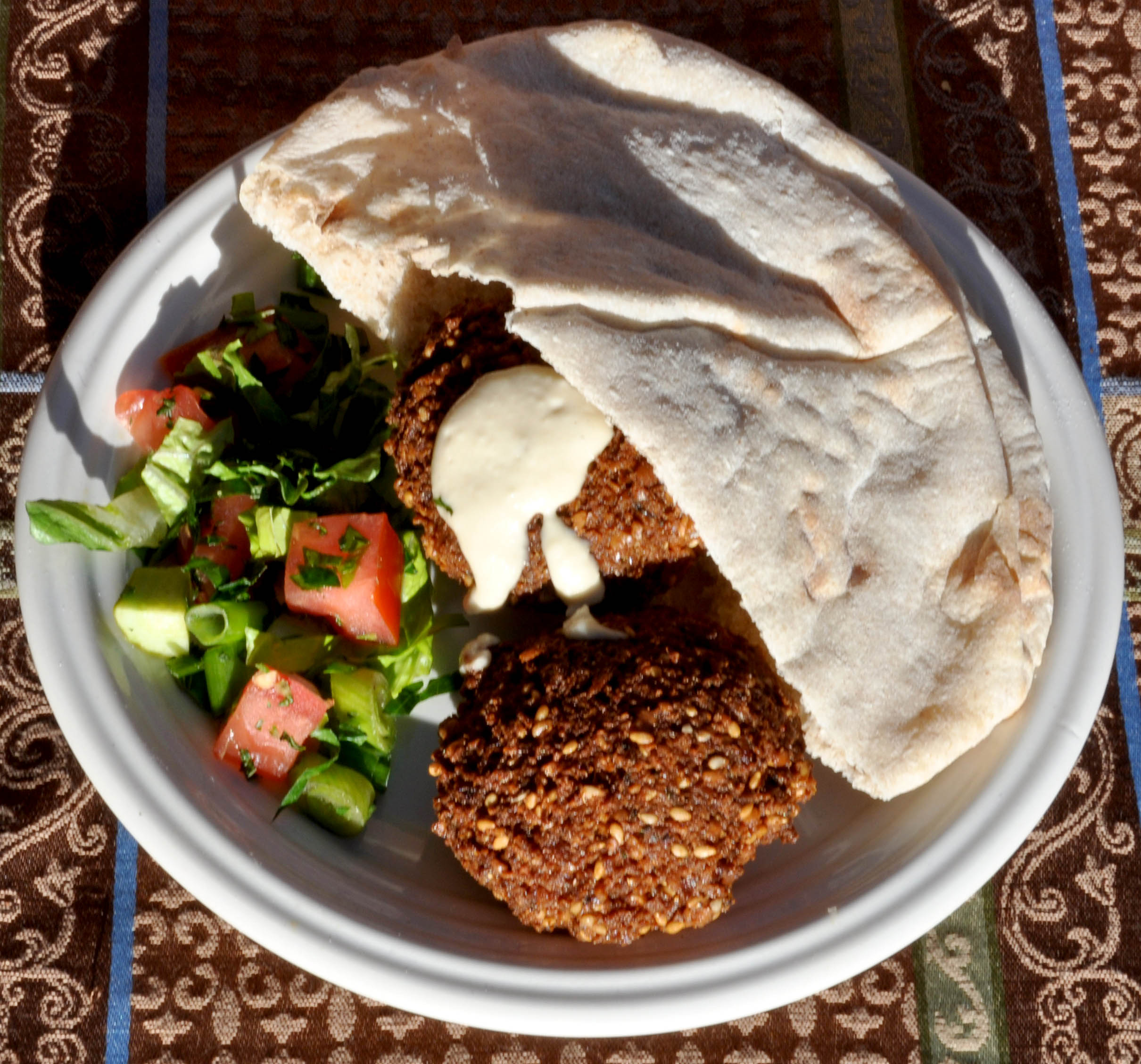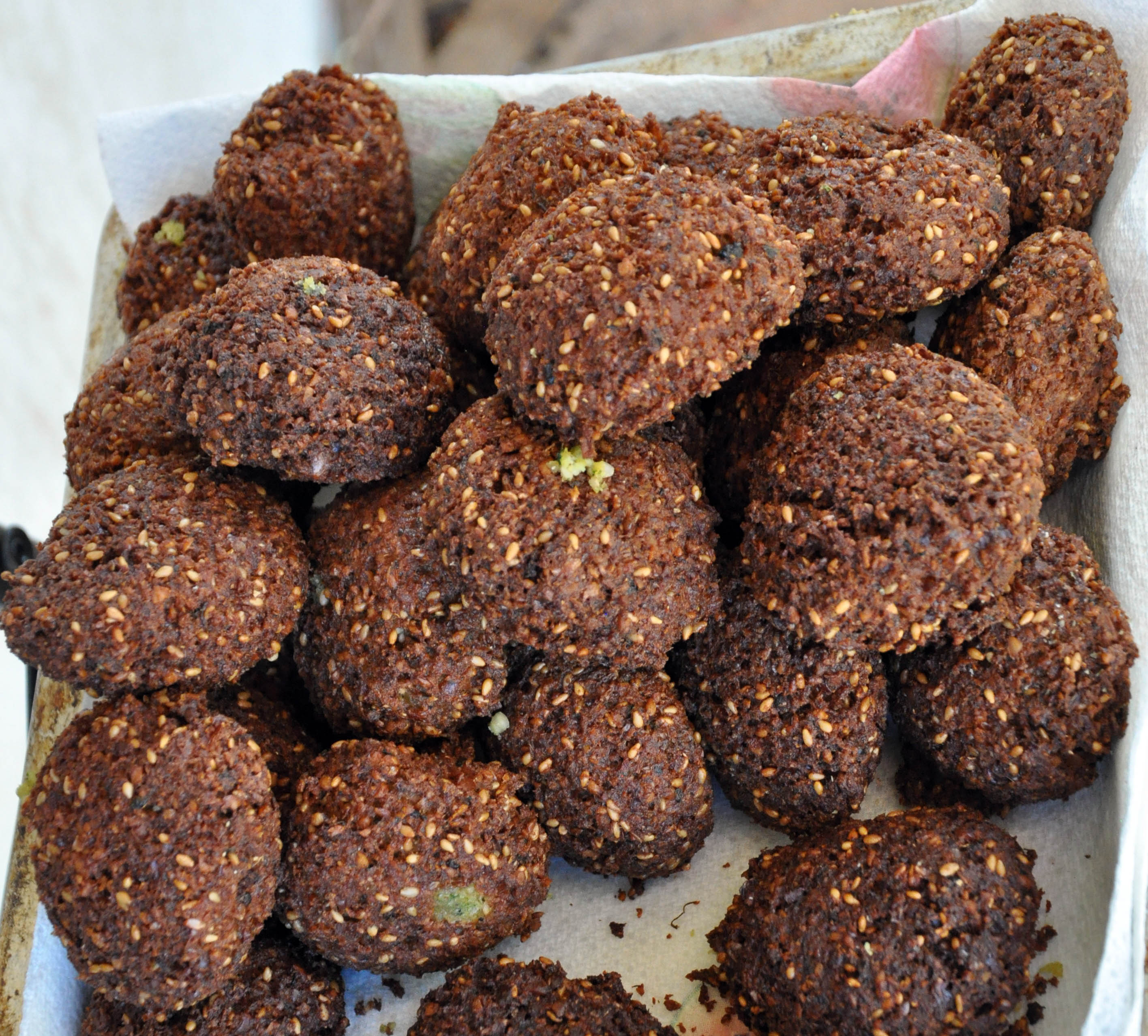
Falafel
There may be no more iconic vegetarian food from the Middle East than falafel. 'Falafel’ (فلافل in Arabic) appears to trace its origins back to the Aramaic language word “palpēl” which was used to describe round balls. It is generally believed that falafel originated in Egypt, possibly with the Coptic Christian community where these meat-free fritters were eaten during Lenten meals. They were then exported throughout the Middle East and became ubiquitous in the Levant. Falafel are now a common street food throughout Lebanon, Jordan, and Syria, and are considered the national dish of not only Egypt, but also Palestine and Israel. In its original Egyptian formulation, falafel were made with skinned, dry fava beans. As they moved north into the Levant chickpeas were added into the mixture, and became the dominant pulse used in the north. In either case, falafel is made from soaked beans that have been ground into a coarse paste. It is important that fully cooked pulses not be used, though, as the resultant dough would fall apart in the hot oil. To these ground pulses various flavorings have been added, such as garlic, parsley, sesame, and cumin, along with a little additional chickpea flour as a binder. The dough is then fried in hot oil to cook to increase the digestibility of the pulses and give the fritters a wonderfully crunchy crust. Falafel are very reminiscent of akara, another fritter made from soaked – but not cooked – beans. Akara are characteristic of Nigeria and the west African countries, where they are made with the cowpeas indigenous to the area. This food was exported to Brazil and the Caribbean during the slave trade. We know of no direct connection between these two foods, and they may simply represent independent evolutionary events. However, it also seems possible that the concept behind akara was brought into west Africa through 13th-15th century Arabic slave traders from the Maghreb and Nile basin. Our version of falafel is inspired by the recipe presented in Jeff Smith’s ‘The Frugal Gourmet on Our Immigrant Ancestors.’ It is typical of those made in the southern Levant as it uses equal proportions of fava beans and chickpeas. It will taste far better than any store-bought premix (and most restaurant falafel) that you can find, and you should consider making them a part of your normal kitchen activities. Makes about 12 falafel, depending upon the fritter size: 1 cup dried garbanzo beans soaked overnight Remove the brown skin from the soaked fava beans. Finely chop or grind garbanzos and favas in a food processor or meat grinder. Blend in all remaining ingredients and let the mixture stand for at least 1 hour. We sometimes make this a day or two ahead, and hold in the refrigerator. Form into balls by pressing the mixture very hard into a mold so that it holds together when immersed in the hot oil. We use a two-inch ice cream scoop and a flat table knife to accomplish this task. Then unmold the pressed ball, flatten slightly with your hands, and drop into 375° F cooking oil in a deep fryer. Turn over the fritters as they float to the top and become nicely browned on one side. Continue cooking until both sides are equally browned. Remove from oil and drain on paper towels. These can also be made by pan frying on the stove top.
While these can be eaten on their own as a meze, they are also excellent as a sandwich. To do this, cut a khoubz loaf in half open wide the interior pocket. Into this place one or two cooked falafel balls along with chopped lettuce, diced tomato, and a generous dollop of tarator sauce. |

